This was published 8 years ago
Chicago city architecture tour: The Windy City's lost genius Walter Burley Griffin
By Garry Maddox
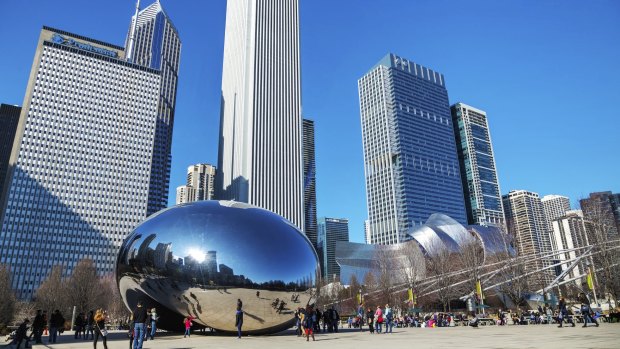
Cloud Gate sculpture with tourists in Millenium park.Credit: iStock
He designed Canberra – and the lake in its centre takes his name – which makes American Walter Burley Griffin one of the best-known architects in Australian history. His work can be also seen in Sydney's Castlecrag and Castle Cove, Melbourne's Newman College and Capitol Theatre and a series of striking incinerators around the country.
But in Chicago, where Griffin and his architect wife Marion Mahony Griffin were proteges of the great Frank Lloyd Wright more than a century ago, you have to work hard to find someone who knows either of them.
A guide on n river cruise of the city's architectural highlights admits he has never heard of them. The Chicago Architecture Foundation suggests the Frank Lloyd Wright Trust, which suggests Professor David Van Zanten, who lectures in architecture at the city's Northwestern University.
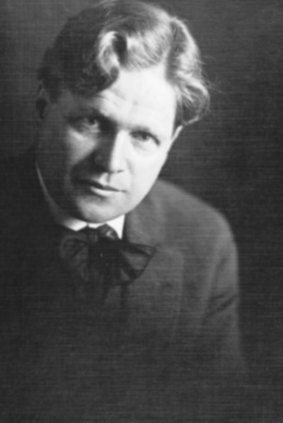
Walter Burley Griffin.Credit: National Archives
And while the professor agrees that both Griffins are surprisingly little known in Chicago now, that was certainly not true when it was a centre of architectural creativity more than a century ago.
"At the time they left, there was considerable feeling of 'oh my lord, first we lost Frank Lloyd Wright in 1909 when he caused a scandal and moved to Wisconsin; we lost Louis Sullivan when he got old and nobody was employing him any more, and now we've lost [Walter] Griffin as well," he says. "There was a famous essay by one of the chief spokesmen for Chicago architecture in 1917 that says 'where have all the geniuses gone?' The Griffins were among the people he named."
Walter, who grew up in Chicago, became interested in architecture as a teenage student visiting the city's World's Fair in 1893, which showed it was recovering from the great fire that destroyed 175,000 buildings and killed up to 300 people two decades earlier.
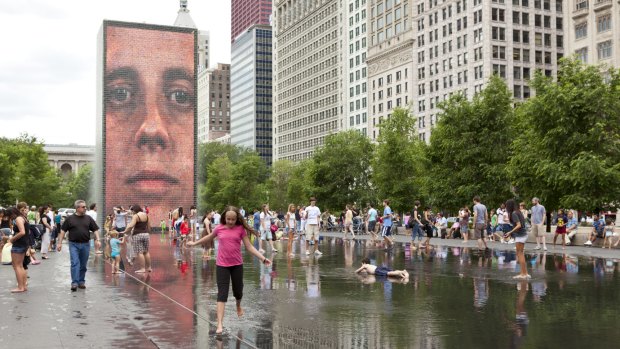
Children play in water of the Crown Fountain in Millennium Park in downtown Chicago.Credit: iStock
He became an assistant to Wright while he was bringing a new American take on architecture with the Prairie School style of solidly constructed buildings with horizontal lines, flat roofs and disciplined use of ornamentation. But with a strong belief in equity, democracy and the need for buildings to harmonise with their landscapes, Griffin went out on his own.
After marrying Marion, who was one of the world's first women licensed to practise architecture, they won an international competition to design Canberra in 1912 and moved to Australia where they lived for 20 years.
While Chicago's striking architecture is dominated by such celebrated talents as Wright, Mies van der Rohe and Daniel Burnham, Australians who want to see the Griffins' early work can add it into their schedule when they visit the city.
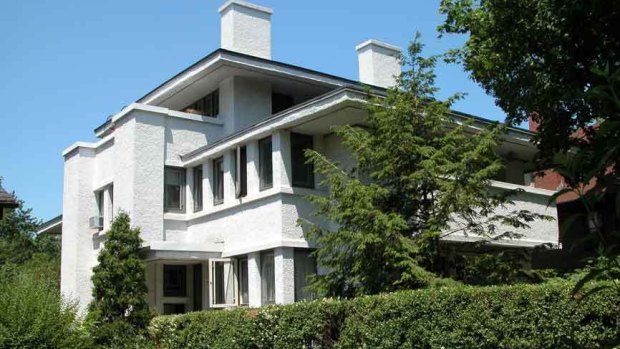
Mary H. Bovee House, Chicago.
A good place to start is Northwestern University's Mary & Leigh Block Museum (40 Arts Circle Drive, Evanston), which has many of the couple's architectural drawings.
While Marion has been less well-known than her husband, there has been a new appreciation of her exceptional work in recent years, which includes a book by Van Zanten and the naming of Marion Mahony Griffin Beach Park on Lake Michigan. But her best-known work, the stone Church of All Souls in Evanston, was demolished in 1960. "It makes me want to scream," Van Zanten says. "It's now a parking lot."
But some of Walter's houses are still standing in Evanston not far from the university (reached via Purple Metra line to Main Street station).
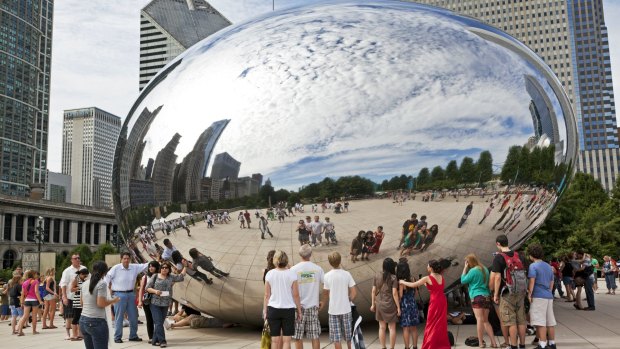
The steel sculpture named Cloud Gate in Millennium Park in downtown Chicago.Credit: iStock
A few minutes' walk through a suburb of grand homes brings you to the Carter House (1024 Judson Avenue), a substantial home from 1910 that is partly shielded by trees. Van Zanten describes it as among Griffin's more conservative homes. "It's very beautiful – it looks much more like Frank Lloyd Wright than Griffin usually looked in Evanston – but it's actually not one of the most remarkable," he says.
Nearby are the adjoining Comstock Houses from 1906. The most striking is a minimalist home (1631 Ashland Avenue) with geometric windows and peaked roof. It sits on a large block as though on display, though there is nothing to indicate it has any more significance than many of the other impressive homes nearby. Next door (1416 Church Street) in not quite so good condition is the other home in the pair.
More impressive is the Mary H. Bovee House (1810 Ashbury Street), a three-storey home that Van Zanten calls both remarkable and innovative. It shows Griffin moving towards his own style and away from Wright's.
A short train ride away (getting off at Indian Hill station) is another notable home at Winnetka.
The Solid Rock House (82 Essex Road) is the first Griffin home that Van Zanten says fascinated him. It is also the one Chicago house – there are others in Mason City, Iowa – that foreshadows his homes in Castlecrag.
"It was a cast concrete house and it was meant, as often with Griffin, as a prototype," he says. "He even created a small company called the Solid Rock Company and was hoping to do concrete houses in larger numbers. He then went off to Australia and that faded."
While not as prominent as the lake in Canberra, there is one part of Chicago that carries his name – Walter Burley Griffin Place in Beverly, which has seven early homes designed shortly after going into practice on his own.
The city has many other architectural treasures that date back to a time when it was the location for the world's first skyscraper in the 1880s, now long demolished.
One building from the 1920s that is well worth a visit is the Tribune Tower, a wonderfully flamboyant neo-Gothic limestone building (435 North Michigan Avenue) that celebrates the role of newspapers in its foyer and features fragments from the world's greatest structures on its outside wall, including the Great Wall of China, Taj Mahal, Berlin Wall, Great Pyramid of Giza, Angkor Wat and Sydney Opera House.
New York architects Raymond Hood and John Mead Howells won a competition to create "the most beautiful and distinctive office building in the world" – and it may well be.
Chicago is also a great city for public art, including a giant Picasso sculpture in Daley Plaza and Anish Kapoor's shiny Bean (see panel) and Jaume Plensa's Crown Fountain, which features constantly changing faces on two glass block towers, in Millennium Park.
For tourists, architectural river cruises and bus tours are among Chicago's most popular attractions.
Chicago's Original Architecture Tour, run by Wendella, is a 75-minute cruise through all three branches of the Chicago River.
Our guide, Evan, sketched the city's history since being founded as Fort Dearborn in the early 1800s and pointed out where the great fire that destroyed 60 per cent of the city started in a barn. And while he tells the famous apocryphal story about a cow kicking over a lantern, he admits there are many theories about how it began before sweeping through the city.
Throughout the tour, he points out many striking buildings including the distinctive Corn Cob Towers at Marina City (300 North State Street) and the Willis Tower (formerly Sears Tower at 233 South Wacker Drive), the 108-storey skyscraper that was once the world's tallest building.
Then there is the Old Chicago Main Post Office (433 West Van Buren Street) where the Joker's bank robbery in The Dark Knight was filmed and the Carbide and Carbon Building (230 North Michigan Avenue) that was reputedly inspired by a champagne bottle.
Evan relates the surprising news that despite being known as the Windy City, Chicago is actually the 16th windiest city in the United States, with the title originally given from its windbag politicians. And that Chicago River is one of the only rivers to be reversed so that waste did not flow into Lake Michigan ("St Louis has bottled up all the wastewater and sells it back to use as Budweiser beer," he says).
For a different look at the city, the Chicago Architectural Foundation runs an Architectural Highlights By Bus tour that covers 48 kilometres over 3½ hours.
It starts in the central city, with a stop at the Rookery (209 South LaSalle Street), a 12-storey Romanesque building that was innovative for its "floating foundations" that allowed it to be built on marshy soil. Our guide, Joan, led us into the striking atrium in white marble and gold with a curved staircase that Wright modernised in 1905.
Then it was across the road to the Field Building – built on the site of the first skyscraper (135 South LaSalle Street) – to see its stylish art moderne lobby that has an elevator indicator panel that is a work of art in itself.
There is another stop at the Illinois Institute of Technology campus for Mies van der Rohe's Crown Hall (3360 South State Street), a huge glass workroom, and Rem Koolhaas' clever McCormick Tribune Campus Centre (3201 South State Street), which takes the curse off the elevated train line above it by wrapping it in a concrete and corrugated stainless steel tube.
Another stop is for Wright's famous Robie House (5757 South Woodlawn Avenue), a striking home of horizontal planes, recessed windows and decorative glass that the American Institute of Architects named one of the 10 most significant structures of the 20th century.
They all demonstrate why Chicago's architecture has led to it being called the Paris of the Prairie.
TRIP NOTES
MORE INFORMATION
choosechicago.com, architecture.org, blockmuseum.northwestern.edu
GETTING THERE
Qantas flies to Los Angeles (twice a day) and Dallas (six days a week) for American Airlines connections to Chicago.
STAYING THERE
The Acme Hotel Company (15 East Ohio Street) is a well-located boutique hotel with a rock'n'roll edge.
EATING THERE
Eataly (43 East Ohio Street) is an Italian food emporium, with a variety of restaurants upstairs and places for snacks, cakes and gelato downstairs.
SEEING THE ARCHITECTURE THERE
The Chicago Architecture Foundation (see architecture.org) runs walking, bus/trolley, L train, Segway, bicycle and river cruise tours. Wendella (see wendellaboats.com) also runs river cruise tours from March to November.
Garry Maddox travelled at his own expense.
BUILD IT AND THEY WILL COME
THE BEAN
Anish Kapoor's Cloud Gate – better known as the Bean – is a polished stainless steel sculpture in Millennium Park that draws in tourists like a magnet and brilliantly reflects the city's skyline.
JAY PRITZKER PAVILION
Frank Gehry designed a stainless steel dominated concert venue, also in Millennium Park, that seats more than 11,000 people and has an acoustic system suspended above the audience on a network of pipes. It hosts free concerts over summer.
WRIGLEY FIELD
The home of baseball's Chicago Cubs has a charm based in history, with its passionate fans, ivy-covered outfield wall, hand-turned scoreboard, traditional food and beer stalls and the quirky rows of seats on top of surrounding buildings.
Sign up for the Traveller Deals newsletter
Get exclusive travel deals delivered straight to your inbox. Sign up now.